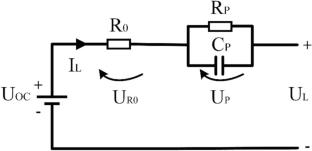The multi-cell coupling method is an effective way to solve the dynamic response problem of fuel cell power systems. However, it needs to control the stable output voltage to extend the service life of the power supply system. This article uses a PID controller to model and analyze proton exchange membrane fuel cells (PEMFCs). A lithium-sulfur battery (Li–S battery) model was established, and the discharge process of the lithium-sulfur battery was accurately simulated using the method of minimizing prediction error. These models are coupled through DC/DC boost converters to achieve a collaborative power supply system. The results indicate that the output voltage of the fuel cell is effectively stabilized at 24 V. The output voltage of the lithium-sulfur battery pack is designed to be 44–50 V. Each individual battery voltage is balanced to achieve a stable output voltage of 48 V. The system is powered by a proton exchange membrane fuel cell stack as the main power source and a lithium-sulfur battery pack as the auxiliary power source. At room temperature of 23 °C, the output voltage of the system can be stabilized within a controllable range of 48 V. Based on the operational characteristics and power demand analysis of the target ship, the basis for constructing a dual power source energy management strategy is elaborated. On this basis, fuzzy control was designed with ship demand power and lithium battery SOC as inputs and lithium battery output power as system output. An improved state flow controller was constructed by adding a ship demand power limiting unit to the logic threshold strategy that originally only had lithium battery SOC as the threshold.




